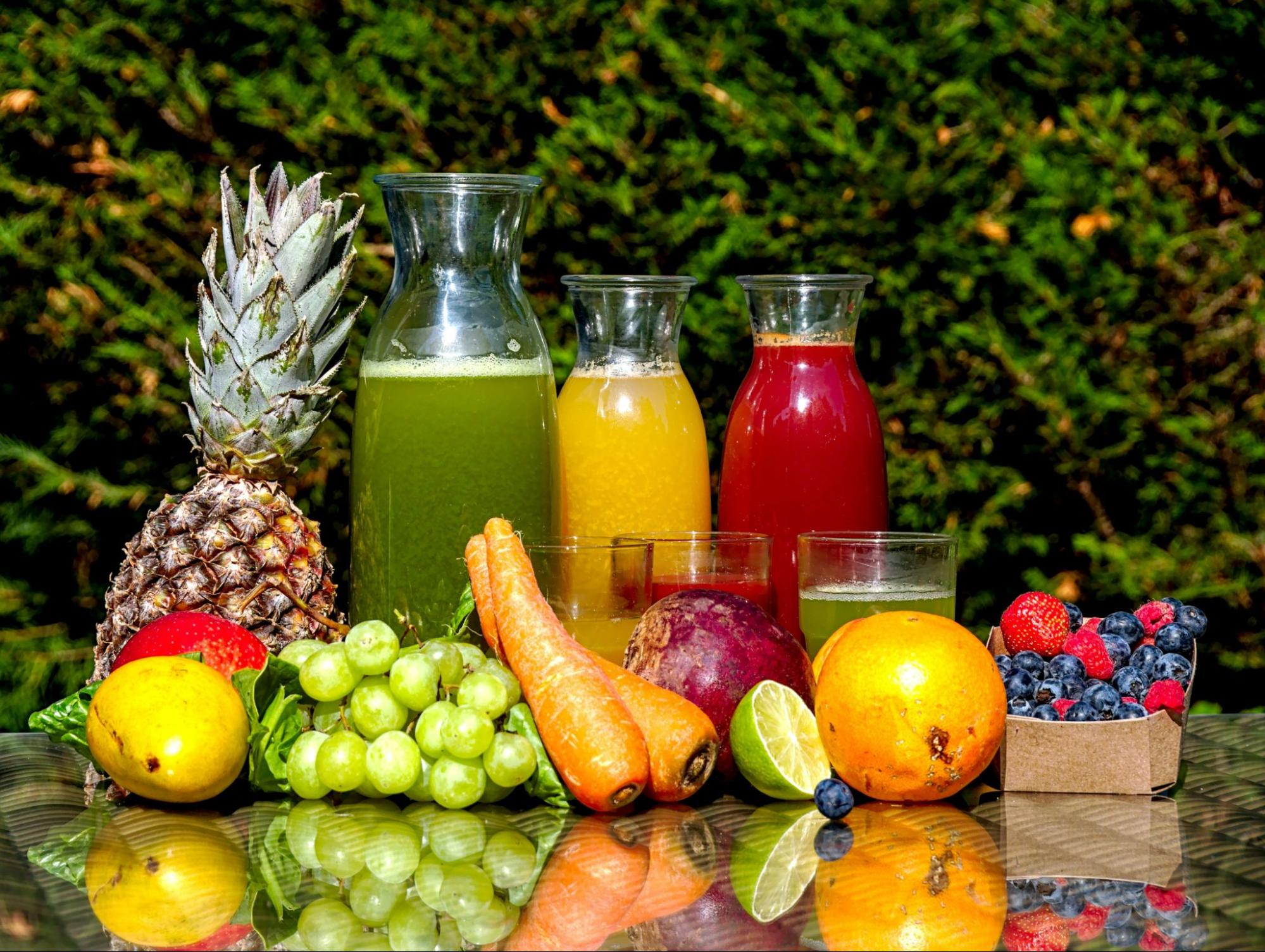Iron is an essential element that our bodies require for various tasks, including the production of hemoglobin, which transports oxygen throughout the body. Iron deficiency can cause anemia, tiredness, and other health problems.
Fortunately, iron consumption may be increased by introducing iron-rich foods and drinks into our diets.
What is Iron Deficiency?
Iron deficiency occurs when the body does not have enough iron to operate properly, resulting in diminished synthesis of red blood cells and hemoglobin. This might result in health problems including anemia, shortness of breath, and weakness.
An insufficient diet, chronic blood loss, or an inability to absorb iron from meals are major causes of iron deficiency.
Causes of Iron Deficiency
- Poor Diet: Not getting enough iron from food sources such as animal protein, lentils, and leafy greens.
- Vegetarian or vegan diets: Plant-based foods include non-heme iron, which is less easily absorbed than heme iron found in animal-based meals.
- Menstruation: Blood loss during menstruation might lead to low iron levels.
- Pregnancy: Pregnant women require higher iron due to increased blood volume and the demands of their growing kids.
- Medical conditions: Celiac disease, inflammatory bowel illness, and stomach or intestinal surgery can all impair iron absorption.
Symptoms of Iron Deficiency

Iron deficiency may not cause any symptoms at first. However, when your body’s iron levels decline and anemia develops, symptoms may become more evident. This may include:
- Headaches
- Dizziness
- Pale skin
- Chest pain
- Rapid heartbeat
- Difficulty concentrating
- Cold hands and feet
If you observe any of these symptoms and feel you may be iron deficient, you should seek medical attention.
Health Risks
If left untreated, iron deficiency can progress to iron deficiency anemia. This greatly impairs oxygen transport and increases the risk of:
- Developmental delays in children
- Preterm birth and low birth weight for infants
- Reduced immune function
- Heart complications
Children might have severely compromised mental and physical development. Anemia in pregnant women is responsible for almost one-fifth of maternal fatalities during delivery. Overall, iron deficiency anemia causes about 50,000 fatalities per year.
What is the Difference between Heme vs Non-Heme Iron
Iron exists in two forms: heme iron and non-heme iron. The primary distinction between the two is the source.
Heme iron is derived from hemoglobin and myoglobin, proteins present in iron-rich animal meals such as red meat, fish, and chicken. Heme iron is readily absorbed by the body. Examples of beverages with heme iron are:
- Bone broth
- Clam juice
- Oyster juice
Plant-based foods such as fruits, vegetables, beans, nuts, and grains contain non-heme iron. Non-heme iron is less easily absorbed than heme iron. Examples of beverages with non-heme iron include:
- Blackstrap molasses
- Dried apricots juice
- Prune juice
- Pomegranate juice
- Tofu smoothies
- Spinach juice
- Vegetable juices like tomato, carrot, beet
The absorption of non-heme iron can be enhanced by combining iron-rich plant meals with diets high in vitamin C, as vitamin C improves iron absorption.
Iron-Rich Drinks You Can Make At Home
1. Spinach and Orange Smoothie
This delightful smoothie blends the health benefits of leafy greens such as spinach with the acidic and stimulating flavor of oranges. Spinach, a good source of iron, helps to enhance hemoglobin levels in the blood, whereas oranges include vitamin C, which aids in iron absorption.
This smoothie not only helps with fatigue by increasing iron levels, but it also contains important minerals for overall health.
Ingredients:
- 1 cup fresh spinach
- 1 orange, peeled and chopped
- 1 banana
- ½ cup almond milk
- 1 tbsp honey (optional)
Instructions:
Blend all ingredients until smooth, then serve immediately.
For a change of pace, try replacing the orange with kiwi fruit, another excellent vitamin C source, or spinach with kale.
2. Beetroot with Apple Juice
This earthy, sweet, and energizing juice is packed with nutritional benefits. Beetroots, a natural source of iron, manganese, and folate, aid in the treatment of iron deficiency, whilst apples provide vitamin C and antioxidants.
This juice increases iron levels and functions as a natural detoxifier, making it great for overall health.
Ingredients:
- 2 medium-sized beetroots, washed and chopped
- 2 apples, chopped
- 1 small piece of ginger
Instructions:
Juice the beets, apples, and ginger, or puree them together in a high-powered blender.
Strain the mixture if necessary, then serve immediately.
3. Pomegranate and Strawberry Smoothie
This delectable and antioxidant-rich smoothie mixes iron-rich pomegranates with strawberries, which are high in vitamin C and have anti-inflammatory qualities. This vivid smoothie is a delicious method to combat iron deficiency, improve digestion, and boost your immune system.
Ingredients:
- 1 cup pomegranate juice
- 1 cup strawberries, fresh or frozen
- 1 banana
- ½ cup yogurt
Instructions:
Blend all of the ingredients until smooth. Serve and enjoy this antioxidant-rich smoothie.
4. Blackstrap molasses and warm almond milk
This relaxing and nutrient-dense drink blends blackstrap molasses, which is high in iron and minerals, with creamy almond milk. Blackstrap molasses, a byproduct of sugar production, is high in iron, calcium, and magnesium, while almond milk contains vitamin D, which is required for calcium absorption, as well as healthful lipids.
Ingredients:
- 1 cup almond milk
- 1 tbsp blackstrap molasses
Instructions:
- Heat the almond milk, but do not let it boil.
- Stir in the blackstrap molasses, then pour into a cup. Enjoy this pleasant drink.
- Replace almond milk with your preferred dairy-free milk option, such as oat or soy milk. You may also add a spoonful of cocoa powder to make a soothing chocolate-flavored drink.
5. Kale, Carrot, and Orange Juice
This potent juice mixes the iron-rich superfood kale with the beta-carotene of carrots and the zesty zing of Vitamin C-rich citrus. The juice contains several critical minerals, including iron, vitamin A, vitamin C, and fiber, which feed the body, improve eyesight, and boost the immune and digestive systems.
Ingredients:
- 2 cups kale, washed and chopped
- 1 large carrot, chopped
- 2 oranges, peeled and chopped
Instructions:
- Process these ingredients through a juicer, or blend and strain to create this nutrient-rich drink.
- You may substitute collard greens or Swiss chard for kale for equivalent nutritional advantages, or replace the orange with a grapefruit if you like a tangier flavor.
What to Avoid
While increasing iron consumption with these drinks, avoid the following, which might limit iron absorption:
- Consuming copious amounts of coffee, tea, chocolate, or milk alongside iron-rich meals or beverages.
- Taking certain drugs, such as antacids or proton pump inhibitors.
Foods To Avoid
As important as incorporating iron-rich foods and beverages in your diet, you should also avoid or restrict certain foods and beverages that might interfere with iron absorption. The primary offenders are:
Tea and coffee: These popular beverages include polyphenols or phytates, which can bind to iron and inhibit its absorption.
Calcium-Rich Foods and Drinks: Calcium, a mineral found in dairy products such as milk and cheese, can reduce iron absorption. That is not to say you should completely avoid them, but try to eat them separately from your iron-rich meals.
Whole grains and legumes, like tea and coffee, contain phytates, which can limit iron absorption.
Dietary fiber-rich foods, particularly bran, can interact with iron in the intestines, interfering with its absorption.
Antacids and proton pump inhibitors: These lower stomach acid, which is required to absorb iron from the diet.
Conclusion
These delicious and nutritious DIY iron-rich drinks make it easier to increase your iron consumption than ever before. From smoothies to juices, these five iron-rich dishes can help you overcome iron shortage and stay active.
Remember to eat them in conjunction with a well-balanced diet and to get specific guidance from a healthcare expert, particularly if you have underlying health concerns.
If you enjoyed this article, you may also want to read this article on 7 Top High-Iron Drinks for Busy Adults.
*This information is not intended to serve as a substitute for professional medical or dietary advice tailored to individual needs.
Dr. Kimberly Langdon has been an MD for 31 years, board-certified obstetrician/gynecologist with 19-years of clinical experience. She graduated from The Ohio State University College of Medicine, earning Honors in many rotations. She then completed her OB/GYN residency program at The Ohio State University Medical Center, earning first-place accolades for her Senior Research Project and Score of 98th percentile on a National Proficiency Test.
During her clinical career, she delivered over 2000 babies and specialized in minimally invasive procedures, menopause, endometriosis, menstrual disorders, and polycystic ovarian syndrome. After retiring from clinical practice, she founded a medical device company to commercialize her two patented and four patent-pending medical devices for both life-threatening and non-life-threatening infections.




